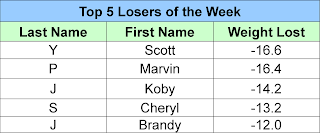At Home
It's convenient, comfortable and safe to work out at home. It allows your children to see you being active, which sets a good example for them. You can combine exercise with other activities, such as watching TV. If you buy exercise equipment, it's a one-time expense and other family members can use it. It's easy to have short bouts of activity several times a day. Try these tips:
 Do housework yourself instead of hiring someone else to do it.
Do housework yourself instead of hiring someone else to do it.- Work in the garden or mow the grass. Using a riding mower doesn't count! Rake leaves, prune, dig and pick up trash.
- Go out for a short walk before breakfast, after dinner or both! Start with 5-10 minutes and work up to 30 minutes.
- Walk or bike to the corner store instead of driving.
- When walking, pick up the pace from leisurely to brisk. Choose a hilly route. When watching TV, sit up instead of lying on the sofa. Better yet, spend a few minutes pedaling on your stationary bicycle while watching TV. Throw away your video remote control. Instead of asking someone to bring you a drink, get up off the couch and get it yourself.
- Stand up while talking on the telephone.
- Walk the dog.
- Park farther away at the shopping mall and walk the extra distance. Wear your walking shoes and sneak in an extra lap or two around the mall.
- Stretch to reach items in high places and squat or bend to look at items at floor level.
- Keep exercise equipment repaired and use it!
Most of us have sedentary jobs. Work takes up a significant part of the day. What can you do to increase your physical activity during the work day? Why not...:
- Brainstorm project ideas with a co-worker while taking a walk.
- Stand while talking on the telephone.
- Walk down the hall to speak with someone rather than using the telephone.
- Take the stairs instead of the elevator. Or get off a few floors early and take the stairs the rest of the way.
- Walk while waiting for the plane at the airport.
- Stay at hotels with fitness centers or swimming pools and use them while on business trips.
- Take along a jump rope in your suitcase when you travel. Jump and do calisthenics in your hotel room.
- Participate in or start a recreation league at your company.
- Form a sports team to raise money for charity events.
- Join a fitness center or gym near your job. Work out before or after work to avoid rush-hour traffic, or drop by for a noon workout.
- Schedule exercise time on your business calendar and treat it as any other important appointment.
- Get off the bus a few blocks early and walk the rest of the way to work or home.
- Walk around your building for a break during the work day or during lunch.
Play and recreation are important for good health. Look for opportunities such as these to be active and have fun at the same time:
 Plan family outings and vacations that include physical activity (hiking, backpacking, swimming, etc.)
Plan family outings and vacations that include physical activity (hiking, backpacking, swimming, etc.) - See the sights in new cities by walking, jogging or bicycling.
- Make a date with a friend to enjoy your favorite physical activities. Do them regularly.
- Play your favorite music while exercising, something that motivates you.
- Dance with someone or by yourself. Take dancing lessons. Hit the dance floor on fast numbers instead of slow ones.
- Join a recreational club that emphasizes physical activity.
- At the beach, sit and watch the waves instead of lying flat. Better yet, get up and walk, run or fly a kite.
- When golfing, walk instead of using a cart.
- Play singles tennis or racquetball instead of doubles.
- At a picnic, join in on badminton instead of croquet.
- At the lake, rent a rowboat instead of a canoe.
Physical Activity in Your Daily Life from the American Heart Association




.jpg)
.jpg)
.jpg)
.jpg)
.jpg)







.jpg)
.jpg)
.jpg)
.jpg)





.jpg)
.jpg)
.jpg)
.jpg)



.jpg)
.jpg)
.jpg)
.jpg)
.jpg)


 Makes 6 Servings
Makes 6 Servings








